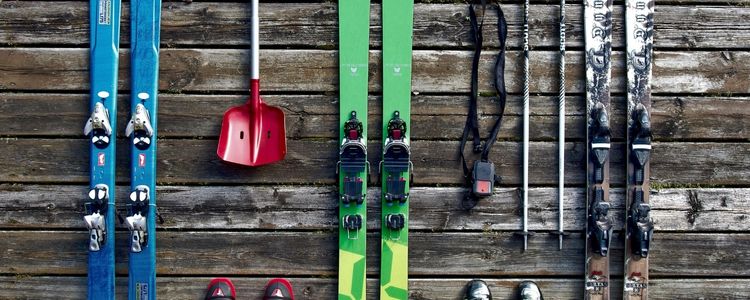Your Guide to Embracing Mountain Life in Aspen
Living in Aspen means adapting to a lifestyle where nature sets the schedule and community bonds form through shared experiences. This comprehensive guide explores what it takes to thrive in one of Colorado's most prestigious mountain towns.
Table of Contents
- Understanding Aspen's Unique Environment
- Lifestyle Adjustments for Mountain Living
- Neighborhood Guide
- Real Estate Market Insights
- Expert Guidance from Ryan Schwartz
- Building Community Connections
- Year-Round Recreation
- Essential Services and Utilities
- Living Well in Aspen Starts with the Right Fit
Understanding Aspen's Unique Environment
Aspen sits at 7,900 feet above sea level, creating daily challenges that don't exist at lower elevations. The altitude affects everything from physical stamina to cognitive performance during the first weeks of residence. Simple tasks like grocery shopping or walking the dog require more planning when snow, altitude, and limited infrastructure come into play.
The climate varies dramatically across different elevation bands within the valley. Homes with western exposure face heavier wind shear, while properties in protected valleys experience colder air pooling and longer snowpack retention. These microclimates directly influence maintenance schedules, heating costs, and year-round accessibility.
Lifestyle Adjustments for Mountain Living
Seasonal Rhythms
Residents align their schedules with natural cycles rather than urban conveniences. Winter mornings may start with remote-starting vehicles and checking avalanche forecasts before commuting. Summer routines often include early trail runs to avoid afternoon storms and coordinating with neighbors for shared maintenance projects.
Infrastructure Considerations
Daily reliability requires deliberate systems planning. Many homes operate independently of city utilities, using private wells and septic systems. Properties above 8,000 feet often need backup generators, heated driveways, and snow-retention roof systems.
Essential Systems:
- Dual-broadband internet with backup power sources
- Radiant heating with propane furnace backup
- Water storage tanks for well-dependent properties
- Remote monitoring systems for seasonal homes
Neighborhood Guide
Resort-Adjacent Areas
Properties near resort bases offer immediate access to lifts and après-ski culture. These neighborhoods feature mixed-use developments with boutique retail, chef-driven dining, and consistent snow removal services. The areas maintain strong rental performance due to their centrality and amenity-rich appeal.

Historic Districts
Cultural districts centered around Aspen's core provide walkable access to performance venues, galleries, and architectural landmarks. These areas feature homes dating to the mining era or mid-century period, with preserved exteriors and modernized interiors. Residents often walk to lectures, gallery openings, and seasonal symphonies within a five-block radius.
Mid-Mountain Zones
Valley-edge neighborhoods offer space without sacrificing access to town. These areas feature newer construction with enhanced insulation, radiant heating, and snow-melt driveways. The zones attract full-time residents who value privacy and self-sufficiency while maintaining manageable commutes to Aspen's core.
Real Estate Market Insights
Market Dynamics
Aspen's real estate market operates under strict development codes and limited undeveloped land. New construction faces lengthy approval processes and sustainability mandates. Off-market transactions are common among legacy estates, often facilitated through local networks rather than MLS platforms.
Key Market Factors:
- Inventory constrained by zoning codes and environmental regulations
- Pre-release previews common for distinguished properties
- Properties in Wildfire Urban Interface zones require defensible space planning
- Short-term rental viability depends on zoning and community sentiment
Strategic Ownership Considerations
Informed buyers prioritize operational systems over cosmetic features. Properties with redundant power sources, fiber connectivity, and water rights command premiums. Successful rental properties require experiential curation and full-service property management to outperform basic passive models.
Expert Guidance from Ryan Schwartz
Ryan Schwartz of Aspen Real Estate brings over a decade of experience helping clients navigate luxury home purchases and sales. His expertise spans from understanding local microclimates to navigating complex permitting processes for high-elevation properties.
"Aspen represents the pinnacle of luxury real estate markets," says Schwartz. "Due to increasingly strict development codes and limited undeveloped land, supply continues to reach all-time lows while demand remains high."
Building Community Connections
Integration Through Participation
Community bonds form through shared experiences rather than casual introductions. Weekly trail maintenance crews, seasonal festivals, and volunteer organizations like Roaring Fork Outdoor Volunteers create opportunities for meaningful connections.
Cultural Engagement
Aspen's cultural calendar includes small-scale events like poetry readings, painting workshops, and storytelling nights. These gatherings attract full-time residents, part-time homeowners, and visiting creatives, providing natural entry points into the artistic ecosystem.

Service-Based Relationships
Volunteer work through organizations like the Aspen Center for Environmental Studies creates practical connections. These commitments to watershed restoration, habitat preservation, and trail sustainability often reveal community leaders and decision-makers.
Year-Round Recreation
Seasonal Activities
Spring brings wildflower hikes and trail maintenance projects. Summer offers alpine routes, paddleboarding, and fly-fishing. Autumn features backpacking through golden aspen groves and hut-to-hut adventures. Winter transforms the landscape for Nordic skiing, snowshoeing, and backcountry exploration.
Safety and Stewardship
Backcountry recreation requires fluency in avalanche forecasting, weather pattern recognition, and wildlife awareness. Residents contribute to trail restoration projects and follow Leave No Trace principles to preserve access for future generations.
Essential Services and Utilities
Transportation

The free RFTA bus system connects Aspen to neighboring towns with real-time tracking and weather-adjusted schedules. Vehicle ownership requires AWD capability, studless winter tires, and emergency equipment for mountain road conditions.
Healthcare and Veterinary Services
Medical appointments with specialists often require booking through regional networks in Glenwood Springs or Vail. Telemedicine services bridge gaps during winter road closures. Pet care requires advance scheduling, particularly for seasonal wellness visits.
Permitting and Regulations
Construction projects require coordination with Community Development, Environmental Health, and Fire Safety departments. The city enforces tiered review processes for structural additions, with requirements for topographic surveys and materials assessments.
Living Well in Aspen Starts with the Right Fit
Aspen rewards those who embrace its rhythm. Here, success means syncing with the seasons, reading the landscape, and valuing practical readiness as much as luxury.
If you’re considering a move to Aspen, it pays to work with a local expert who understands both the market and the mountain lifestyle. Contact Ryan Schwartz at Aspen Real Estate for help finding a home that fits the way you want to live.